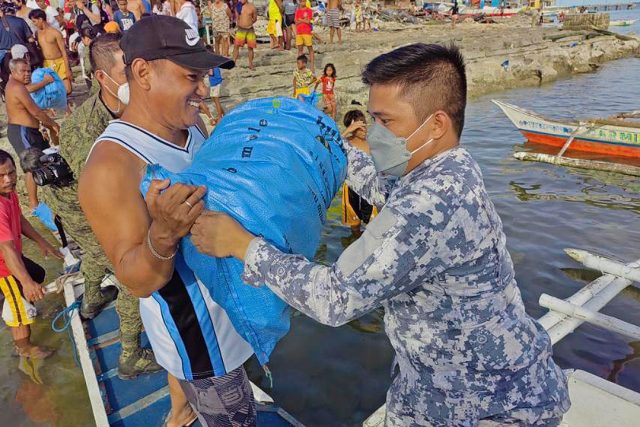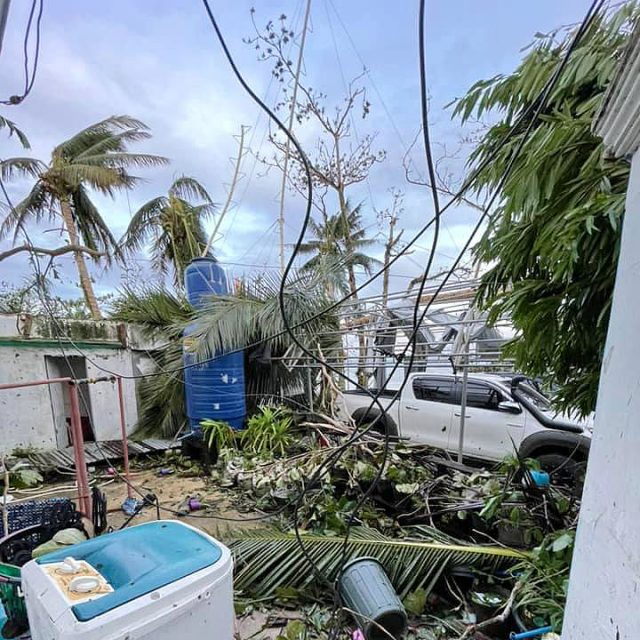PHL OK’s use of molnupiravir, Pfizer shot for kids

THE PHILIPPINE Food and Drug Administration (FDA) has approved the use of the antiviral pill molnupiravir for at-risk adult coronavirus patients, and inoculating children aged 5 to 11 with the Pfizer vaccine.
FDA Director General Rolando Enrique D. Domingo said in a news briefing on Thursday that the emergency use authorization was granted to the COVID-19 treatment pill under the brand name MOLNARZ® by a licensee of biopharmaceutical firm MSD, or known as Merck in the United States and Canada.
Mr. Domingo said several other MSD licensees have pending emergency use applications, some of which are already being dispensed in hospitals under a Compassionate Special Permit.
Molnupiravir, used for the treatment of mild to moderate coronavirus disease 2019 (COVID-19) cases, may only be given to patients 18 years old and above with “risk factors for developing severe illness” such as senior citizens and those with comorbidities, the FDA official said.
PEDIATRIC VACCINATION
Mr. Domingo also announced the approval of the use of Pfizer vaccines, specifically Tozinameran and Comirnaty, for 5 to 11 year olds.
“Upon review of technical documents and evaluation of the US FDA recommendations, the data submitted is sufficient for the EUA approval,” he said, noting the use of the Pfizer shots in the US, European countries, and Canada.
“It is reasonable to believe that the vaccine may be effective to prevent COVID-19 and the benefits of the vaccination outweigh the known and potential risks,” he added. The possible side effects of the vaccine are light fever or slight pain around the injected area.
The Philippines started pediatric vaccination among 12 to 17 year olds in mid-October.
The Pfizer vaccine, Mr. Domingo said, has an above 90% efficacy rate for children. He emphasized that the dosage and concentration of the vaccine will be lower compared to shots used for those 12 and above.
“They will have to order and procure this separately,” he said, referring to the Department of Health.
Procurement will likely start by January next year, he added.
Meanwhile, 6.4 million jabs were administered during the second round of the national vaccination program held Dec. 15 to 22, short of the seven million target as some areas in the path of typhoon Odette cancelled inoculation activities or still unable to send reports, according to the DoH.
In the same news briefing Thursday, Kezia Lorraine Rosario from the DoH’s National Vaccination Operations Center said they still expect the number to increase in the next few days as many areas are unable to submit their complete data due to communication service problems after the typhoon.
She also reported that booster vaccinations rose by about 8,000 from the average 40,000 during the Bayanihan, Bakunahan II after health authorities shortened the interval for top-up shots against COVID-19 earlier this week.
“Local government units are still adapting to the change of directions and are also preparing for the roll-out of booster doses,” she said, noting that the process will likely speed up in the following days.
The DoH earlier said there are around 19.37 million people eligible for boosters. Of these, around 1.2 million already received their top-up shots.
Mr. Domingo reiterated that only adults aged 18 years and above are currently allowed to take the third dose.
Ms. Rosario assured that the country has adequate vaccine supply of different brands for both the first and second dose, as well as the booster shots.
“We will try to allocate more vaccines which allow heterologous combinations,” she added.
The country has been receiving a steady delivery of COVID-19 vaccines, including those purchased by the national government, private sector, local governments, and donations from different countries.
On Thursday, Germany announced that it has sent its fifth batch of vaccine donations to the Philippines, consisting of 1,531,000 more doses of Moderna vaccines from the Access to COVID-19 Tools Accelerator or COVID-19 Vaccines Global Access facility.
The country has received a total of 8,786,600 Moderna vaccines from Germany, which also previously donated 1,638,100 AstraZeneca doses.
The vaccine donation arrived at the Ninoy Aquino International Airport, received by German Embassy Manila Economic Counselor Georg Maue and representatives from the health department and the United Nations International Children’s Emergency Fund.
Ms. Rosario said the Philippine government at the national and local levels are working to ensure equitable distribution of vaccine supply.
The government is targeting to inoculate at least 54 million Filipinos by yearend. There were 46.4 million doses administered as of Wednesday.
CASE TALLY
The DoH on Thursday reported 288 coronavirus infections, bringing the total to 2.84 million.
The death toll from the coronavirus reached 50,981 after 65 more patients died, while recoveries increased by 270 to 2.78 million, it said in a bulletin.
There were 9,251 active cases, 480 of which did not show symptoms, 3,204 were mild, 3,393 were moderate, 1,797 were severe, and 377 were critical.
The agency said 84% of the reported cases occurred from Dec. 10 to 23. The top regions with cases in the recent two weeks were Metro Manila with 63, Western Visayas with 38, and Calabarzon with 27.
It said 3% of the reported deaths occurred in December, 9% in November, 22% in October, 48% in September, 6% in August, 2% in July, 5% in June, 5% in May, and 2% in April.
The DoH said two duplicates, which were recoveries, were removed from the tally. The agency said 167 patients had tested negative and were removed from the tally and reclassified as recoveries.
It added that 60 recoveries were relisted as deaths. Two laboratories did not operate on Dec. 21, while 11 laboratories did not submit data.
The agency said 19% of intensive care units in the Philippines were occupied, while the rate for Metro Manila was 20%. — Alyssa Nicole O. Tan












